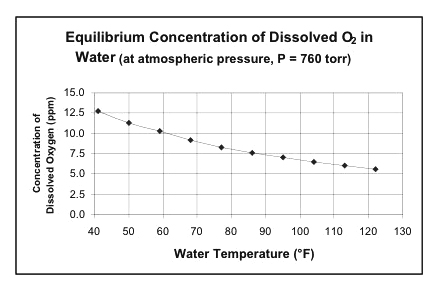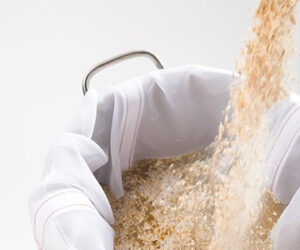Keeping It Cool
Keeping your cool during brew day will certainly enhance your enjoyment of the brewing process. Keeping your beer cool when it matters most can greatly enhance the overall quality of your beer. Measuring and controlling the temperature of your mash and wort on brew day is important, and has been written about extensively in the homebrew literature, but temperature continues to plays a role throughout the life of beer. In this article, I’ll present a “field guide” to the important temperatures on the cold side of brewing. This will include the reasons for hitting or maintaining various temperatures during wort cooling, wort aeration, fermentation, lagering, carbonating, storage and enjoyment.
Wort Cooling
The purpose of wort cooling is to precipitate the cold-break material — which is formed when proteins and polyphenols (tannins) come together — and to prepare the wort for aeration. The idea here is to bring the wort temperature down to the desired yeast-pitching temperature as quickly as possible.
Cold-break precipitate usually begins to form at a temperature of about 140 °F (60 °C). Although there is nothing that a brewer needs to do when the wort drops to this temperature, simply observing the formation of the cold break material can confirm that the cooling process is proceeding.
When cooling your wort, quicker is better because many types of bacteria and wild yeasts would dearly love to make a meal of your lovingly-prepared wort. Bacteria can take up residence in your wort once it drops below lethal temperatures. It is best to minimize the time that the wort temperature is in the range in which bacteria can multiply quickly — for many wort-spoilers, this means the 90–120 °F (32–50 °C) range. Since quicker cooling is better, the cooling water that is used to cool the wort via a heat-exchanger (e.g. counter-flow chiller or immersion coil) or immersion should be as cold as possible. If you do anything active during your cooling procedures (such as adding ice or swirling your chiller), this is the range where your actions would be most helpful. However, keep in mind that most homebrewers cool their wort faster than commercial brewers because we brew on a much smaller scale.
Wort Aeration
Wort aeration is the act of introducing oxygen into the cooled wort. This can be done by injecting oxygen or air into wort using a pump or compressed air source, or agitation of the wort to increase surface area in contact with air. The purpose of this step is to provide optimal conditions for yeast growth during the fermentation process. The temperature at which wort aeration occurs is important because the solubility of oxygen in wort decreases with increasing temperature. The graph on page 49 shows the effect of temperature on oxygen solubility in water.
Cooler wort can hold more dissolved oxygen, so it is advantageous for the wort to be as cool as possible during this step of the process. Note that the solubility of oxygen may play a role in your decision of how to cool your wort and pitch your yeast when making a lager. Some sources instruct homebrewers to cool their wort to 75 °F (24 °C), pitch their yeast, then cool the fermenting beer to lager temperatures once fermentation is evident. Other sources advocate chilling the wort all the way to fermentation temperatures. In the latter case, you could potentially dissolve around 25% more oxygen into your wort by cooling the wort down to 50 °F (10 °C), compared with cooling to 75 °F (24 °C).
Fermentation
Fermentation is the biochemical conversion of fermentable sugars in the wort to ethanol, CO2 and flavor compounds by the action of yeast. The purpose of this step is to turn wort into beer. The fermentation process involves complex interactions of biological, chemical and physical factors. Factors such as wort temperature, wort pH, yeast nutrient availability to the yeast cell, dissolved oxygen content, etc. all interact and play a role in the fermentation process.
The role of temperature in the fermentation process is related to how temperature affects yeast metabolism. When yeast metabolize sugars at higher temperatures, metabolism occurs more quickly, and more flavor compounds will be produced than at lower temperatures. The finished beer will contain increased levels of fusel alcohols, esters, lactones, organic acids and sulfur compounds. These additional flavor compounds may or may not be desirable, depending upon the style of beer. If yeast metabolize sugars at a lower than optimal temperature, a sluggish or incomplete fermentation may result. Residual sweetness in the finished beer will likely be higher than desired.
Optimal fermentation temperatures depend upon the specific strain of yeast in question. In general, the optimal fermentation temperature range for ale yeasts is 59–68 °F (15–20 °C). The optimal fermentation temperature range for lager yeasts is 39–54 °F (3.8–12 °C). For yeast strains that ferment German wheat beers or Belgian-style ales, the fermentation characteristics may vary a great deal depending on temperature. For these, knowledge of the individual strain is often needed to get the best results.
Conditioning (Lagering)
Lagering is the storing of bottom-fermented beer at cold temperatures. The purpose of this is to enhance the finished beer’s flavor profile by “mellowing” and “smoothing-out” its taste. It also helps to settle out proteins, polyphenols and tannins that contribute to chill haze in the finished beer. The term “chill haze” is used to describe the haze which is formed when beer is chilled to 32–36 °F (0–2 °C). This haze will redissolve as the beer is warmed to a temperature of about 68 °F (20 °C). The temperature at which conditioning or lagering occurs is important because the removal of chill-haze compounds is best accomplished if the beer is as cold as possible. Solubility of these compounds decreases with decreasing temperature and maximum removal will occur if the beer is held at the lowest possible temperature for a time long enough for the precipitated material to settle out.
The ideal time and temperature for conditioning beer varies with the beer style. Ales may benefit from conditioning for 2–3 weeks at a temperature of 59–68 °F (15–20 °C). Lager styles such as Octoberfests may be conditioned for several months at 30–33 °F (-1.1–0.5 °C), and doppelbocks may be conditioned for a year or more! Greg Noonan, in his book “New Brewing Lager Beer” (1996, Brewers Publications), recommends that a dextrinous beer from a decoction mash be conditioned 7–12 days for each 2° Plato (roughly 0.008 increments in specific gravity) of the original wort.
Carbonating
Carbonating beer is the process of allowing carbon dioxide (CO2) to dissolve into beer under pressure. This can be accomplished by force-carbonating with CO2 or adding fermentable sugars or young, fermenting beer (kräusening) to induce a renewed fermentation in a closed vessel.
The temperature at which carbonation occurs is important because the solubility of carbon dioxide in beer is directly related to the temperature and pressure of the beer. Carbon dioxide is more soluble in beer at lower temperatures. The table above shows the effect of temperature and pressure on the equilibrium solubility of carbon dioxide in beer.
Generally speaking, beers that are to be consumed at lower temperatures are usually more highly carbonated than beers intended to be consumed at higher temperatures.
Packaging and Storage
Packaging is defined as bottling, kegging or putting beer into a cask, and “storage” is defined as placing beer into the best environment to preserve quality. Temperature is of minimal importance during packaging, but is very important during storage.
It is better to store beer at cooler temperatures. Cooler storage temperature will lead to slower oxidation, slower alteration of flavor profile and generally extend a beer’s shelf life. Conversely, higher storage temperature leads to faster oxidation, faster alteration of flavor profile and generally decreased beer shelf life.
Homebrewed beer does not have to endure the rigors of shipping and potential poor treatment that can occur in stores where beer is sold. If you can store your homebrew at refrigerator temperatures (or colder), it will have close to the maximum theoretical shelf life, compared to commercial beers. (This assumes that the homebrew is not contaminated.) At a minimum, properly-stored, normal-strength beers can stay fresh for about 8 months; stronger beers can benefit from the preservative power of alcohol and some may keep for many years.
Enjoying the Beer
The role of temperature in the enjoyment of beer is very apparent to every beer drinker. At lower temperatures, beery increases, the rate of carbon dioxide release decreases, volatile flavor and odor compounds are released less quickly and there is less overall flavor intensity. Ideal serving temperatures vary for different beer styles, but in general a temperature range of 48–52 °F (9–11 °C) is ideal for most lagers, wheat beers and lambics, while a slightly warmer temperature range of 50–60 °F (10–16 °C) is ideal for most other ales.
Summary
Keeping your cool when it counts is very important in the beer making process. Temperature is an important variable at almost every step, but your beer spends much more time on the “cold side” than your wort does on the “hot side.” By understanding how temperature affects finished beer quality, and by controlling this single variable, brewers will ensure that the quality of their beer is as high as possible.



